Yesterday I spoke at the Colby-Curtis Museum in Stanstead, Quebec, home to the Stanstead Historical Society. The museum is a local treasure, housed in a classical revival-style villa built in 1859 called Carrollcroft.
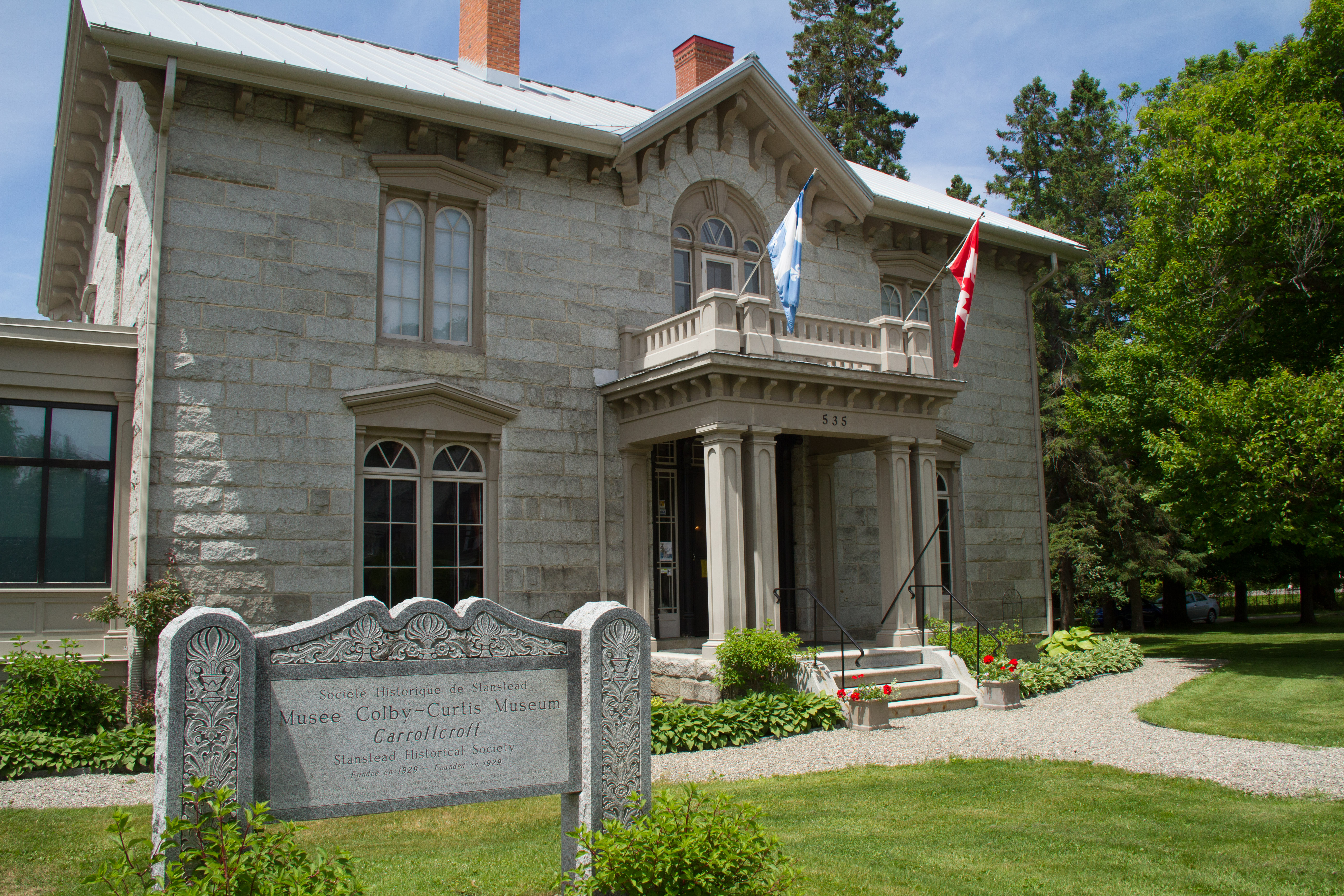
The house, its gardens and adjacent stable and carriage house, tell the story of the Colby family, a prominent local family of American origin. The family donated the house and its contents to the Stanstead Historical Society in 1992. Exhibitions provide insight into the social and cultural history of the county which borders Vermont.
The current exhibition, Abundant in Bloom, is well worth visiting. It looks at the gardens created by the women of the Colby family through artifacts, old photographs and contemporary paintings by Cynthia Hammond, a Montreal artist and Associate Professor of Art History at Concordia University. Based on her research in the museum’s archives, Hammond’s paintings offer fascinating insights into Victorian gardens and the way they were used by the Colby family.
After my talk, I spent a few minutes exploring the museum’s garden as it is today. Appropriately, it too was abundant in bloom.
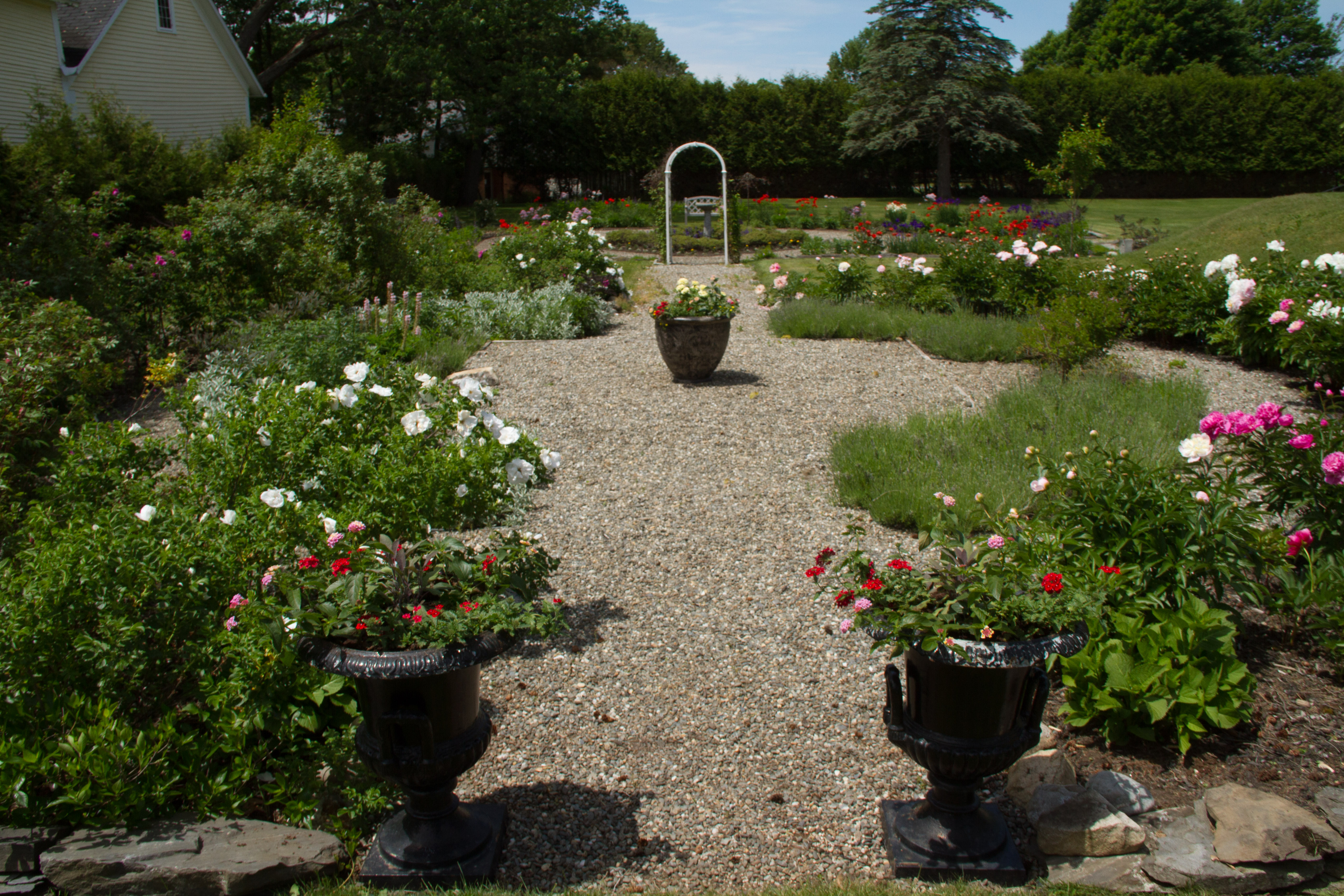
I took these photos under harsh mid-day light so they aren’t as good as I’d like them to be.
The garden isn’t a reproduction of a Victorian garden but it does use aspects of one. It is divided into two sections, each with its own distinctive colour palette. Black urns planted with annuals mark the entrance to the first section, a circular design ringed with peonies and roses.
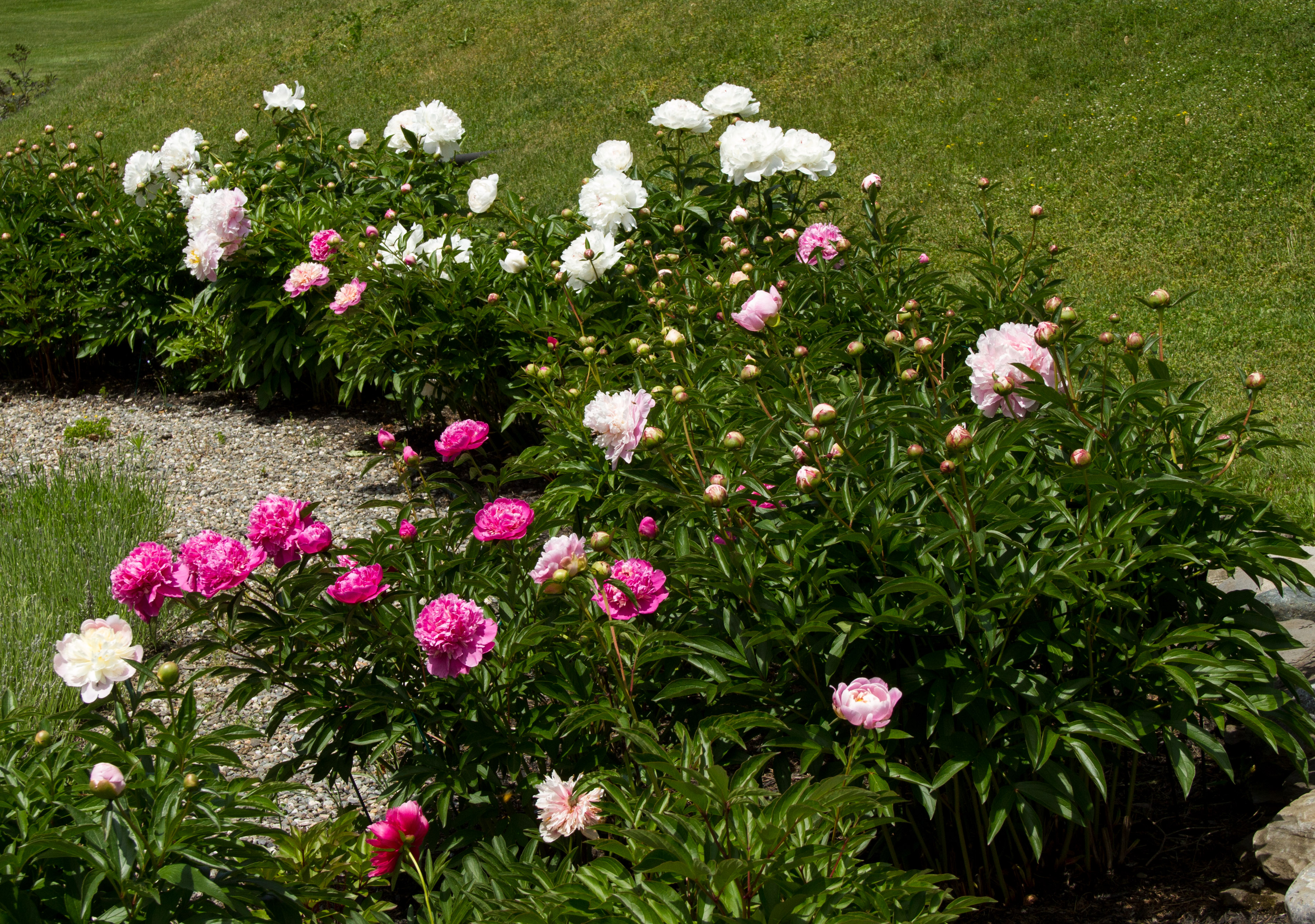
Peonies and old fashioned roses sweetly scent this part of the garden.
The second section of the garden plays off the Victorian love for strongly contrasting colours.
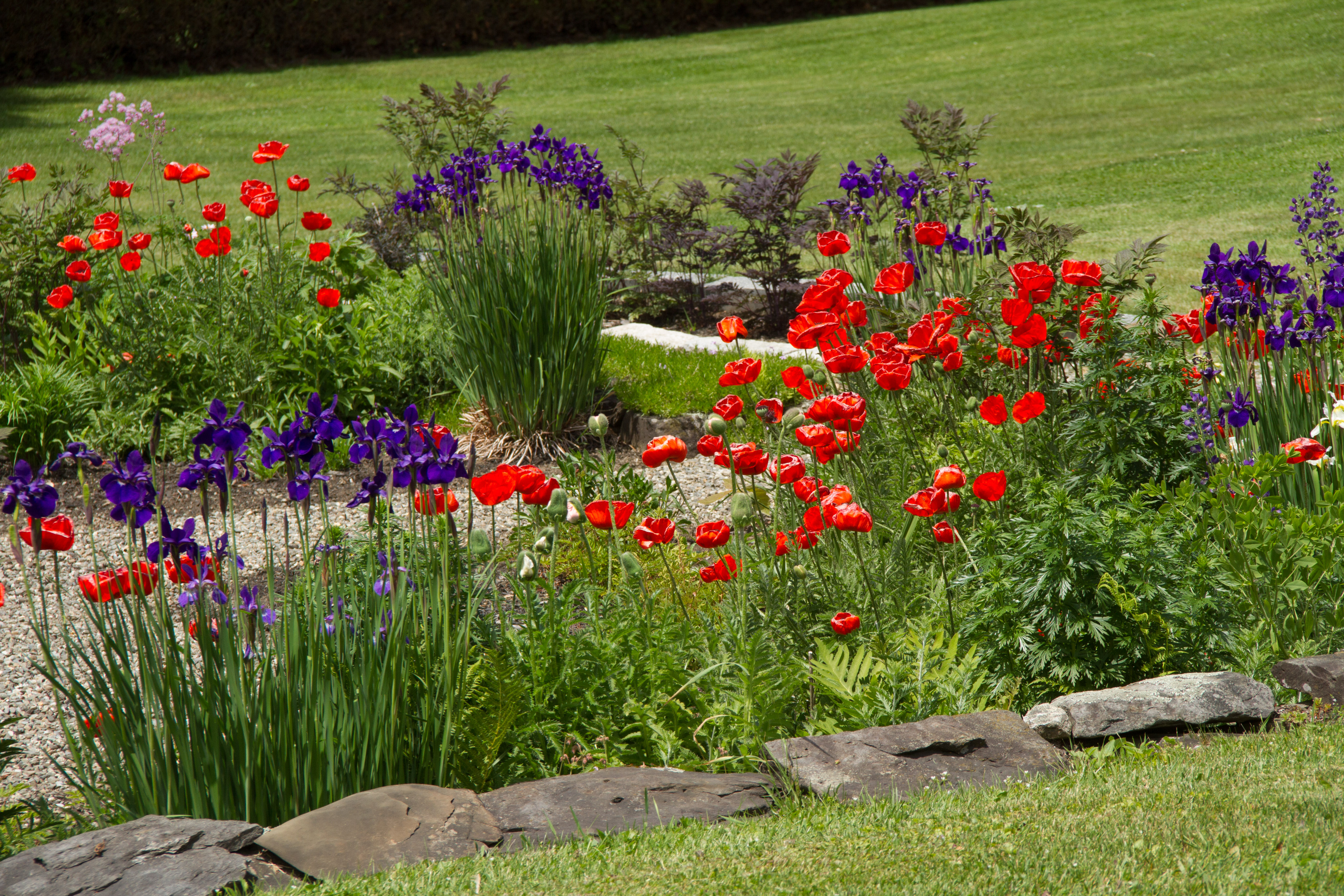
The orange poppies were started from seed by a local volunteer. Delphiniums bloom later in the summer.
Orange poppies and purple iris were combined with baptisia and a pale lavender thalictrum, or meadow rue, in an explosion of colour.
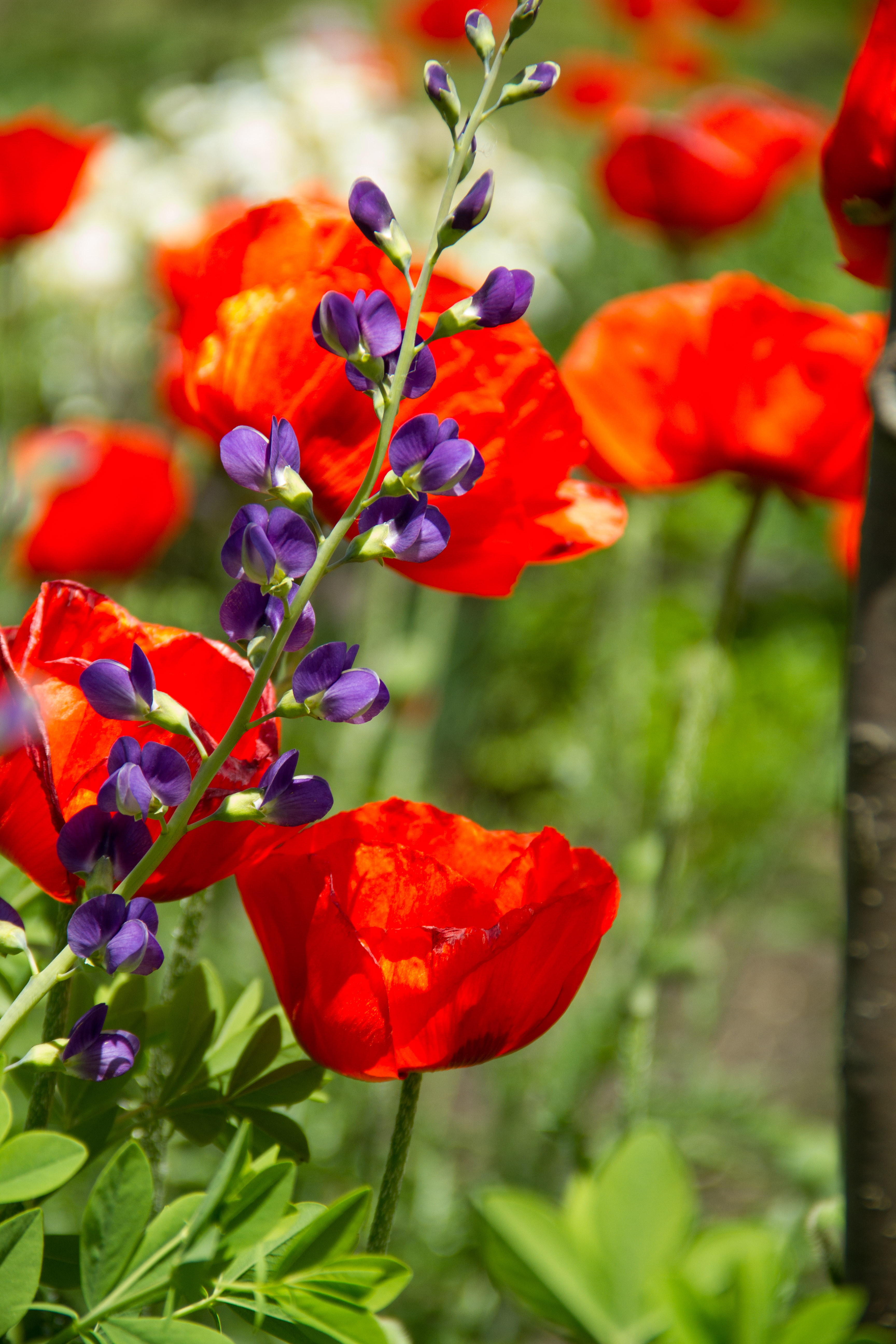
Baptisia is growing in my garden. Seeing this combo makes me want to add some orange poppies.
Orange is one of those colours that goes in and out of fashion. In the 1970s through to the turn of the century, pastel flowers were the rage. To include a bright orange plant in your garden was to mark yourself as being, in Nancy Mitford’s terms, non-U — the “u” was her shorthand for upper class. Today orange is back in fashion, thanks to who knows what. And in my eyes, for drama and impact, the museum’s orange poppies beat the pastel peonies, hands down.
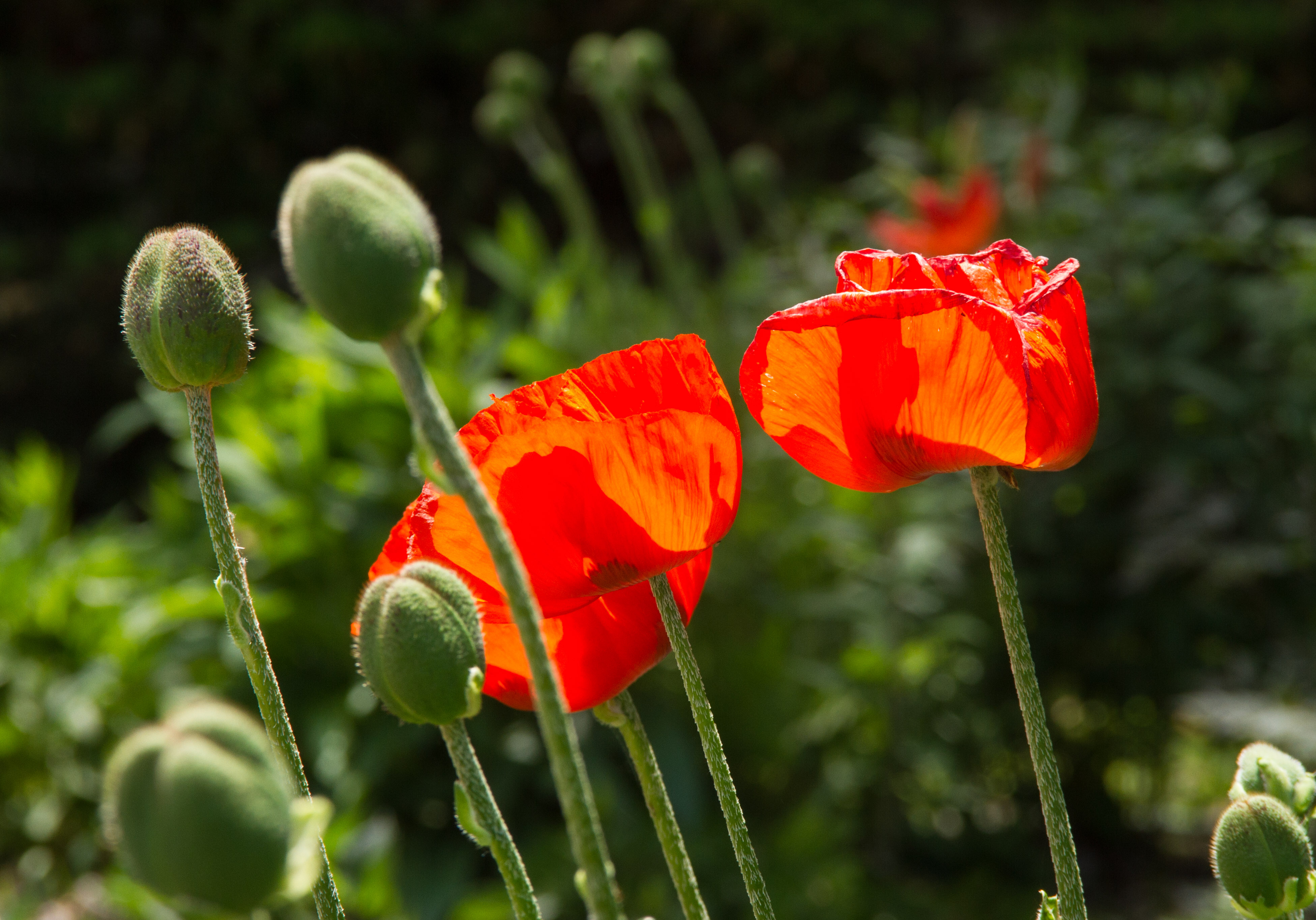
Fuzzy stems only add to the appeal of the crepe-like petals.
The two-part design, dating from 1900 or earlier, may be original, but the garden itself has changed over the years. A wooden pergola smothered with bittersweet once sheltered the area from the road; dangerously rotten, it was taken down some years ago and wasn’t replaced. An arbour separating the two sections of the garden was replaced with a new structure, designed to copy the original as closely as possible.
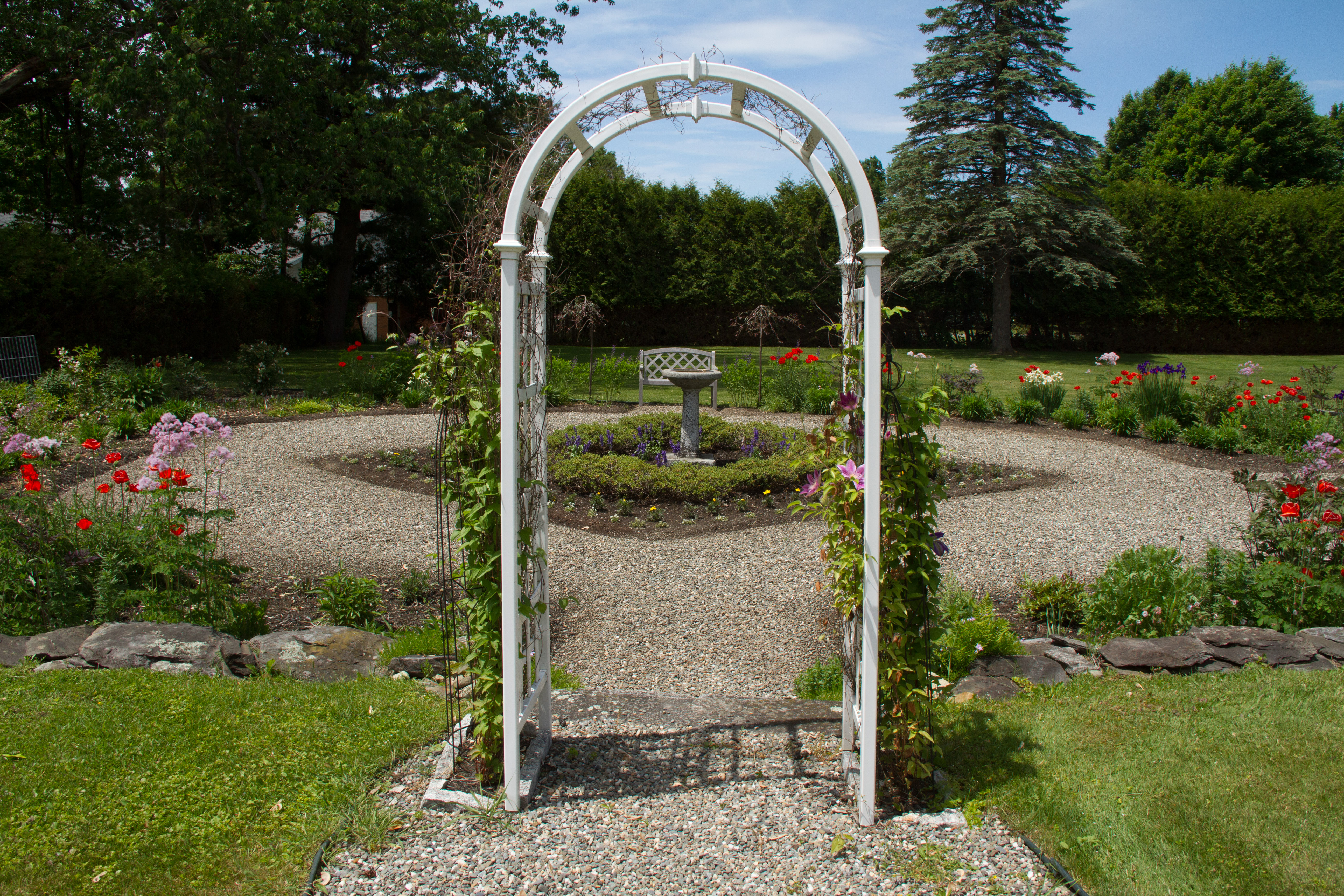
Clematis are now growing up the arbour instead of sweet peas which have chosen not to flourish there.
The garden was resuscitated about 20 years ago and now has colour throughout the summer season. Certainly when I saw it yesterday, it sparkled.
To those who look after it, staff and volunteers alike, I say Bravo! You’ve created a garden that enhances the house museum and brings the current exhibition abundantly to life.






Pat – this info about an “albeit” pseudo Victoria garden in our Eastern Townships is tripypily facinating for me…will definately want to go and visit this little museum for its architecture as well – current members of the Colby family are friends…it will make a great day trip from Sutton and I do want to see Cynthia H’s exhibition – she was one of my Art History profs at Concordia two years ago when I was working on a Masters’. Her great interest and expertise – of course – IS Victorian gardens and architecture.
I totally agree with your penchant for orange and deep blue – Irises, Battisia or Nepeto – they compliment perfectly!
I didn’t know you’d done a Masters in Art History. Would love to talk to you about that one day.
The poppies remind me of Umbria in April. A lovely garden.
Umbria in April…. my mouth is watering.
Hello Pat, Thank you for your lovely description of the garden and
exhibition. I will certainly visit it soon. Yesterday I visited a new
(for me) spot in Vermont. It is called Dog Mountain. Wonderful walking
trail and vistas and a couple of ponds for hot doggies to jump in.
Dog Mountain sounds wonderful, especially on these hot days.
Great to hear they have put the grounds back in shape!
The inside of the museum as well. Definitely worth a return visit.
Red and orange are always in fashion with me. And see the entrance to this friend of mine’s garden: http://veddw.com/general/best-garden-in-monmouthshire-hill-house-glascoed/
Red enough?? Xxxx
John and Sue Wright should hear the applause from Quebec to Monmouthshire. Love the coleus marching up the stairs and (of course) the painted side wall of the house. Plus, plus, plus
Thought you’d like it! I have some good garden makers amongst my friends, I think. Xxxx
Love the Poppies with Baptisia!
What a punch of colour!
It is weird how colors go in and out of vogue and people blindly follow. Shouldn’t we just like whatever we like? That’s what I do! I love seeing reproduction gardens because it’s like traveling back in time. Even though this isn’t original, it looks like a great place to visit.
I’m about to order tons of orange tulips — orange is really turning me on now. But I do remember disliking it twenty or thirty years ago. I still dislike orange marigolds. But what would life be without plant prejudices?